Abstract
A comprehensive validation study was conducted of the Program for Academic Survival Skills (PASS), a consultant-based, teacher-mediated program for student classroom behavior. The study addressed questions related to: (a) brief consultant training, (b) subsequent teacher training by consultants using PASS manuals, (c) contrasts between PASS experimental teachers and students and equivalent controls on measures of teacher management skills, student classroom behavior, teacher ratings of student problem behaviors, and academic achievement, (d) reported satisfaction of participants, and (e) replication of effects across two separate school sites. Results indicated that in both sites significant effects were noted in favor of the PASS experimental group for (a) teacher approval, (b) student appropriate classroom behavior, and (c) four categories of student inappropriate behavior. Program satisfaction ratings of students, teachers, and consultants were uniformly positive, and continued use of the program was reported a year later. Discussion focused upon issues of cost-effectiveness, differential site effects, and the relationship between appropriate classroom behavior and academic achievement.
Keywords: Classroom control and discipline, group contingencies, group reinforcement, behavior management programs, program evaluation, social validation, children
Full text
PDF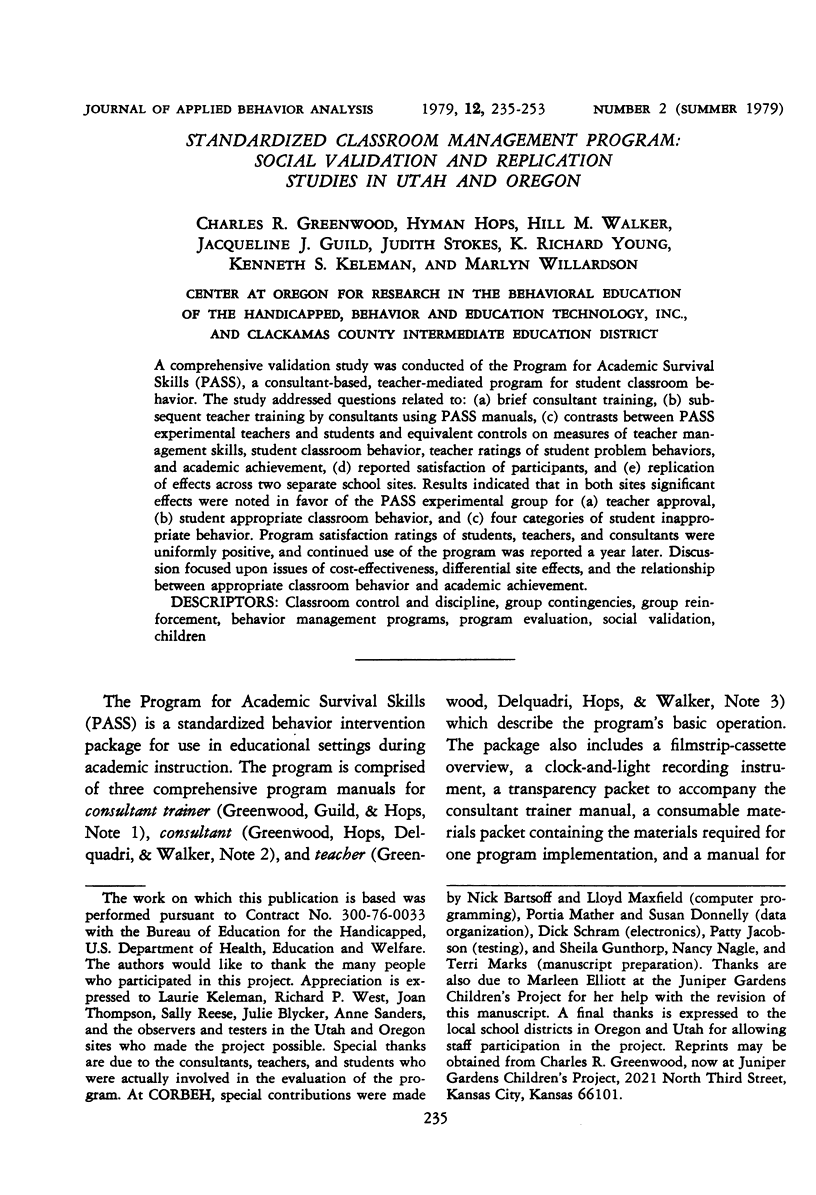
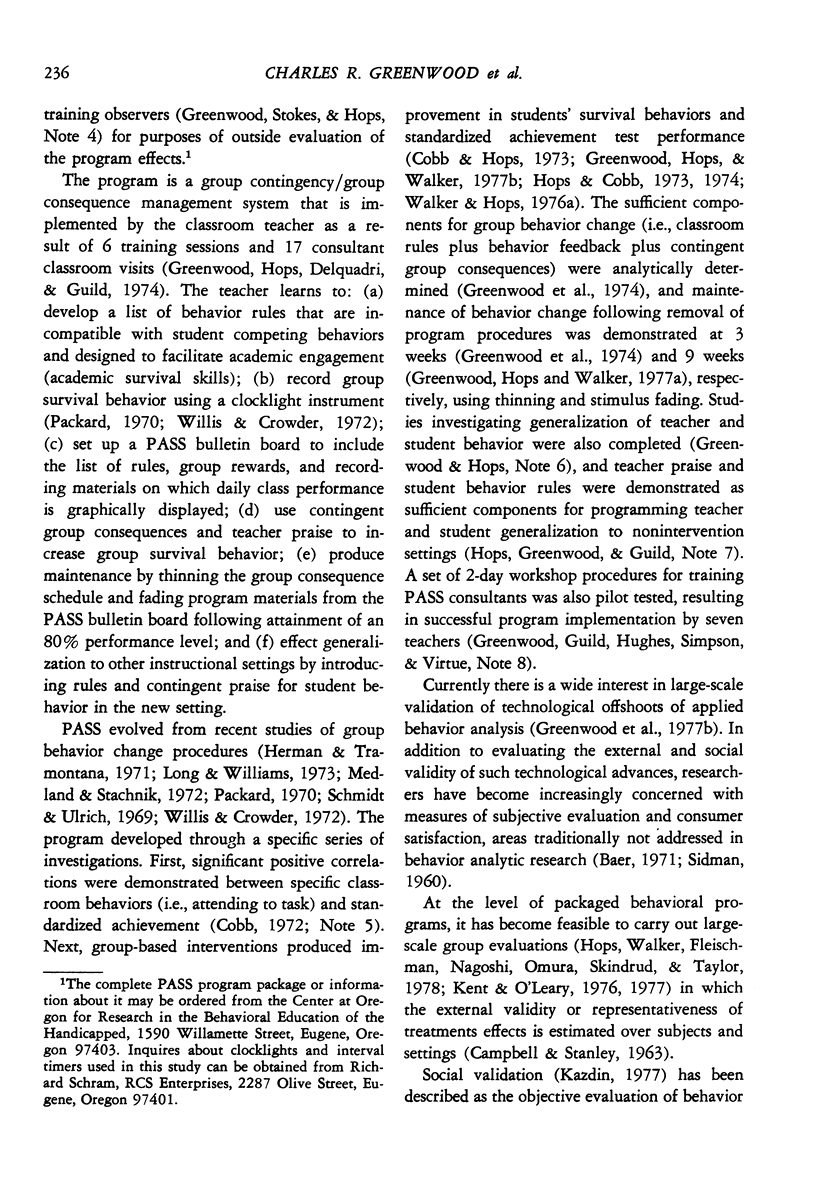
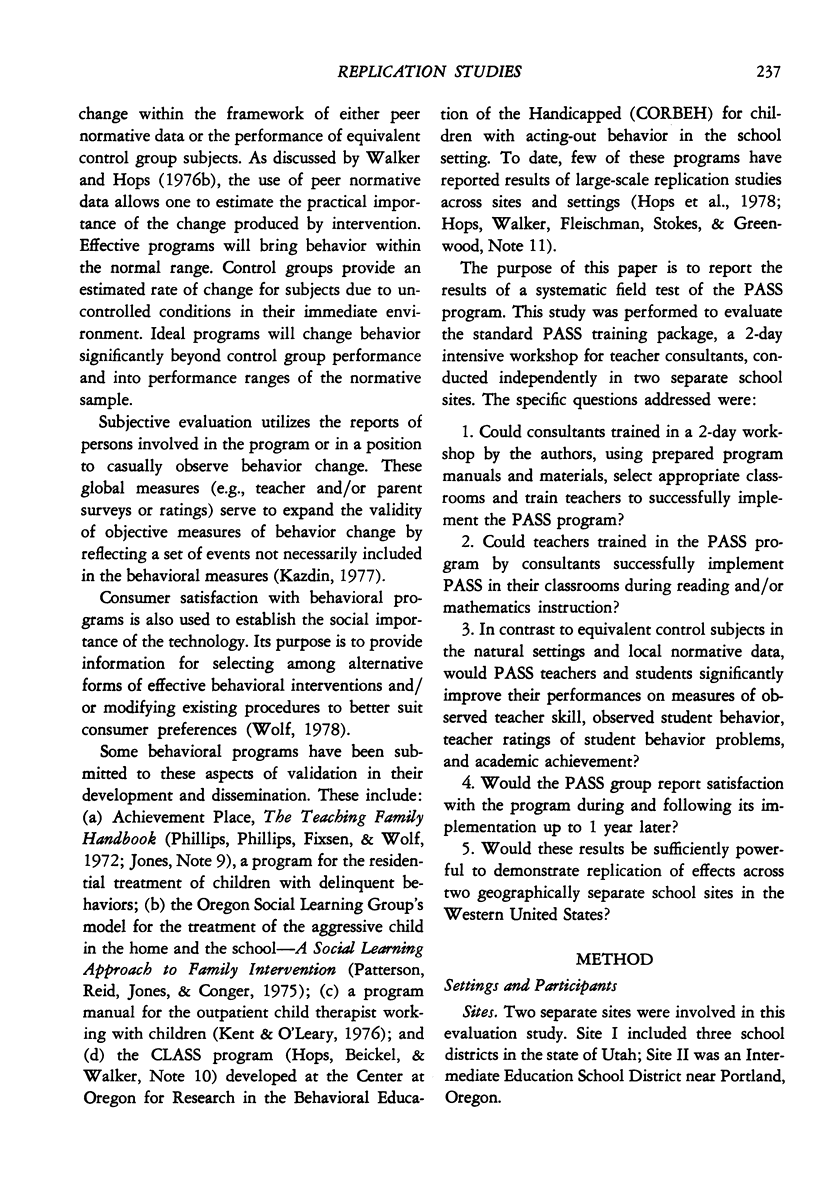
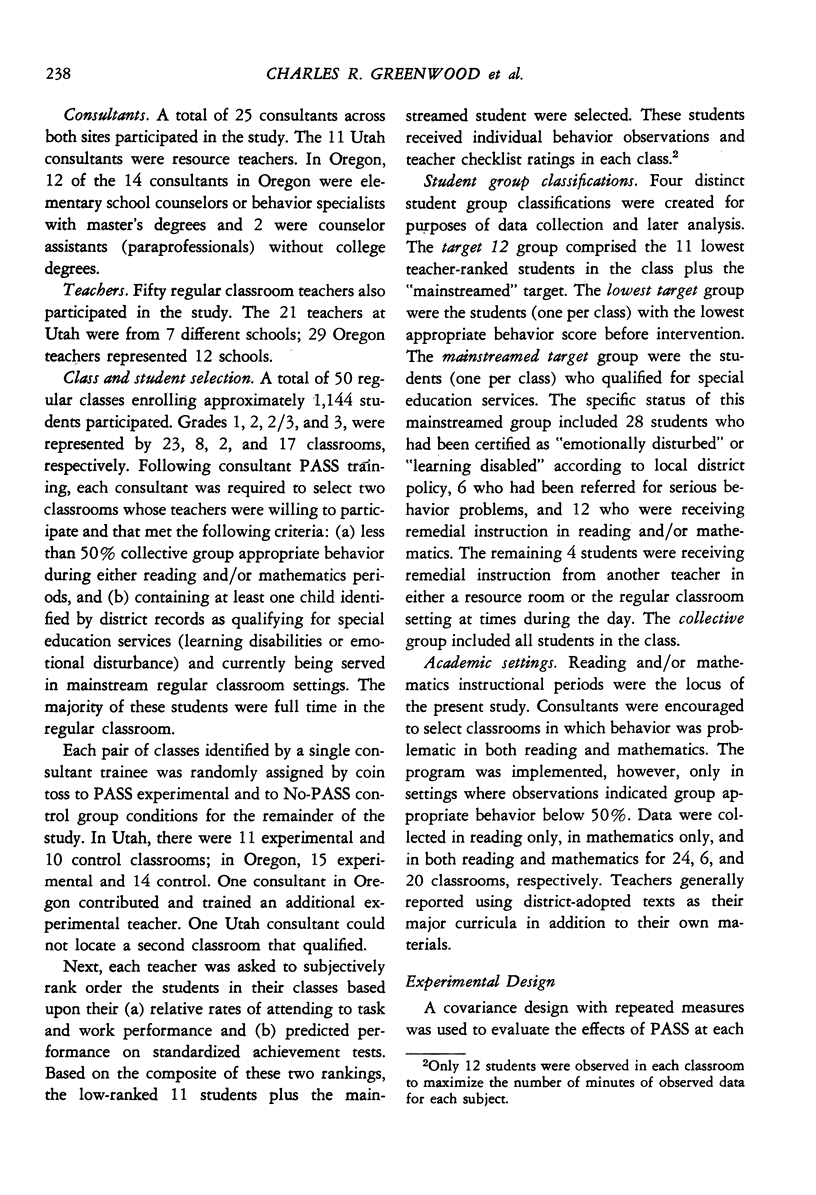
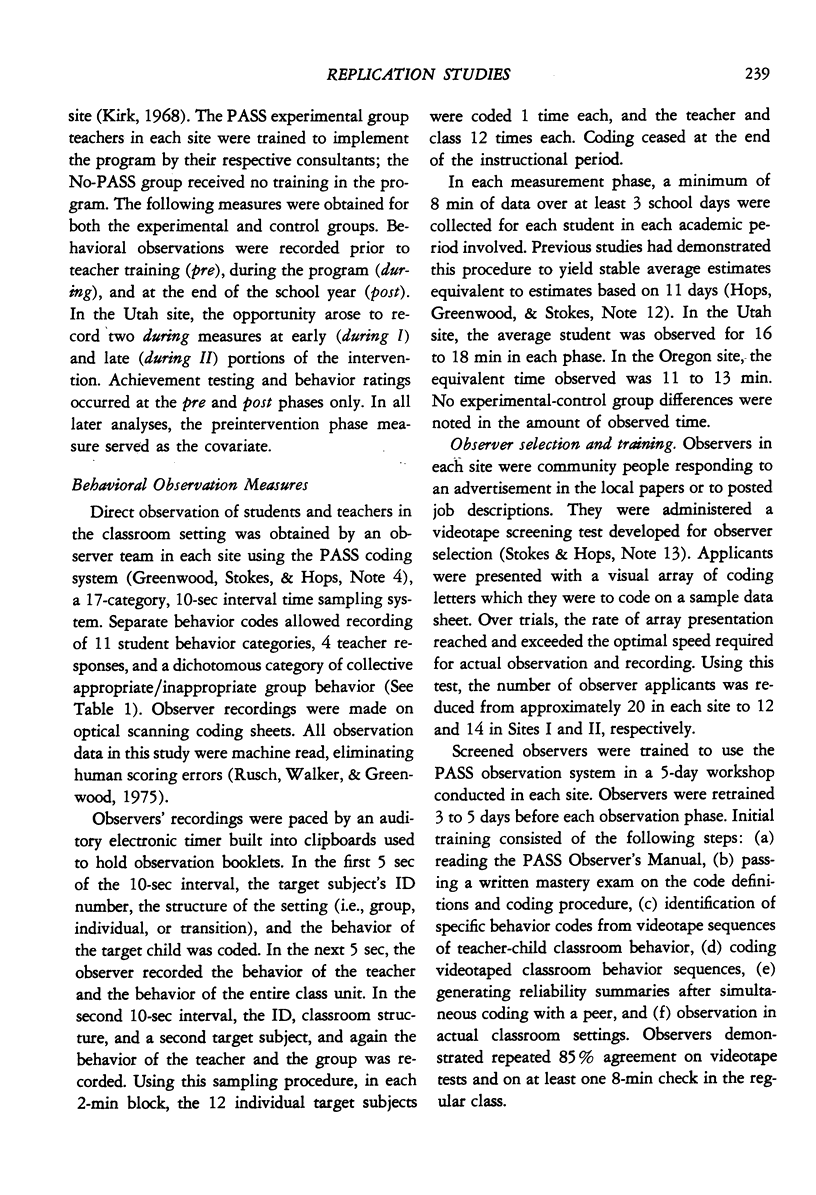
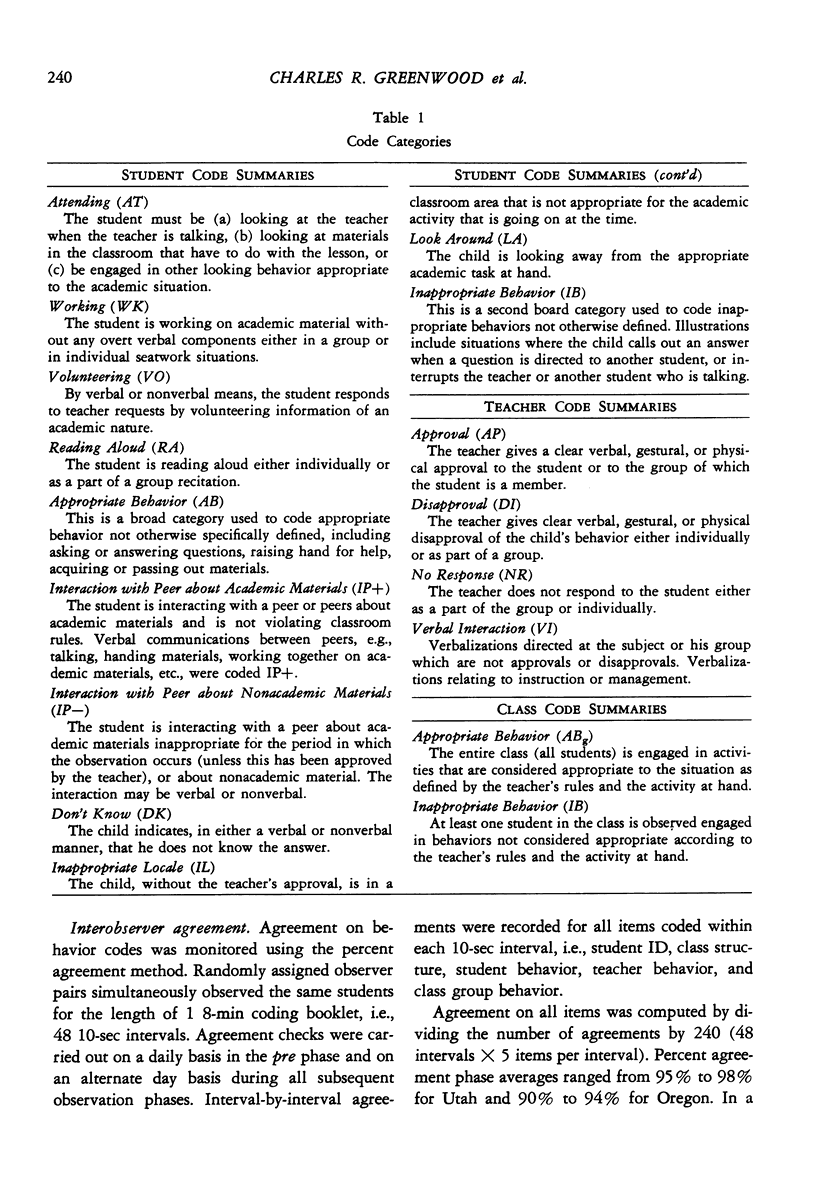

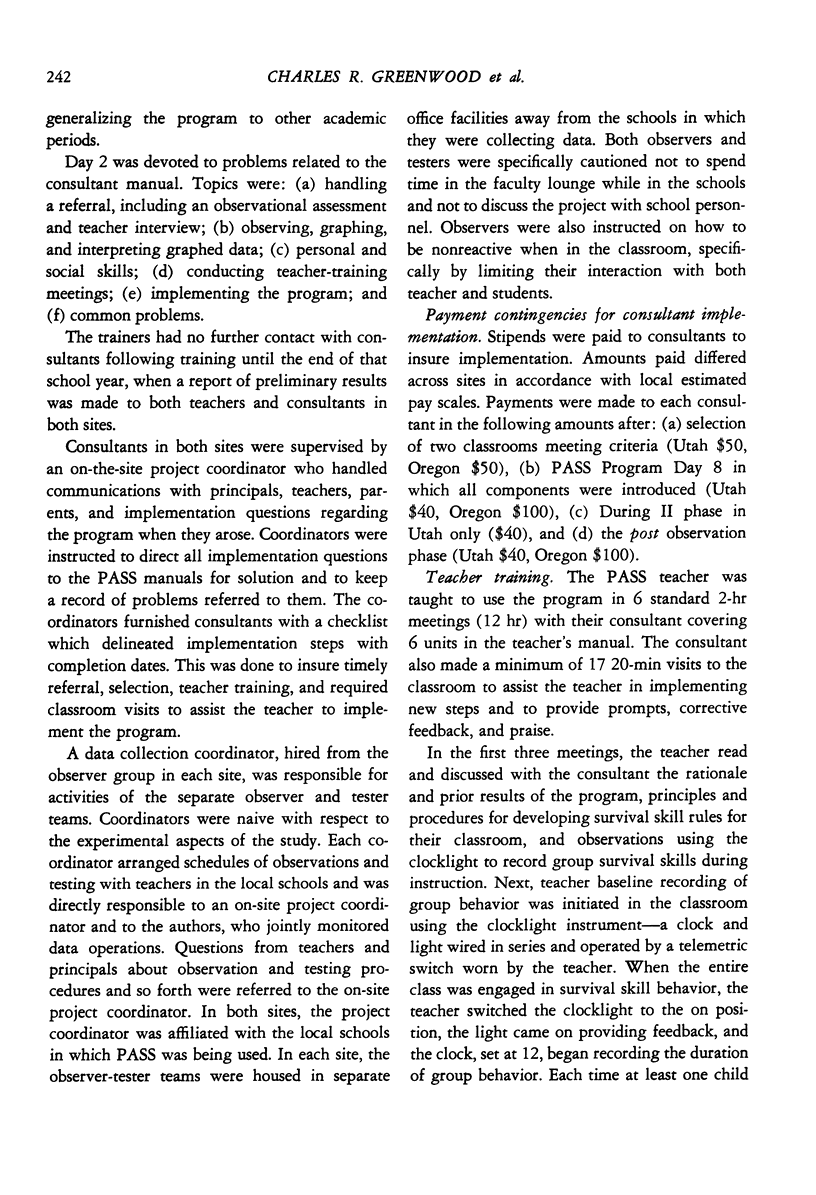
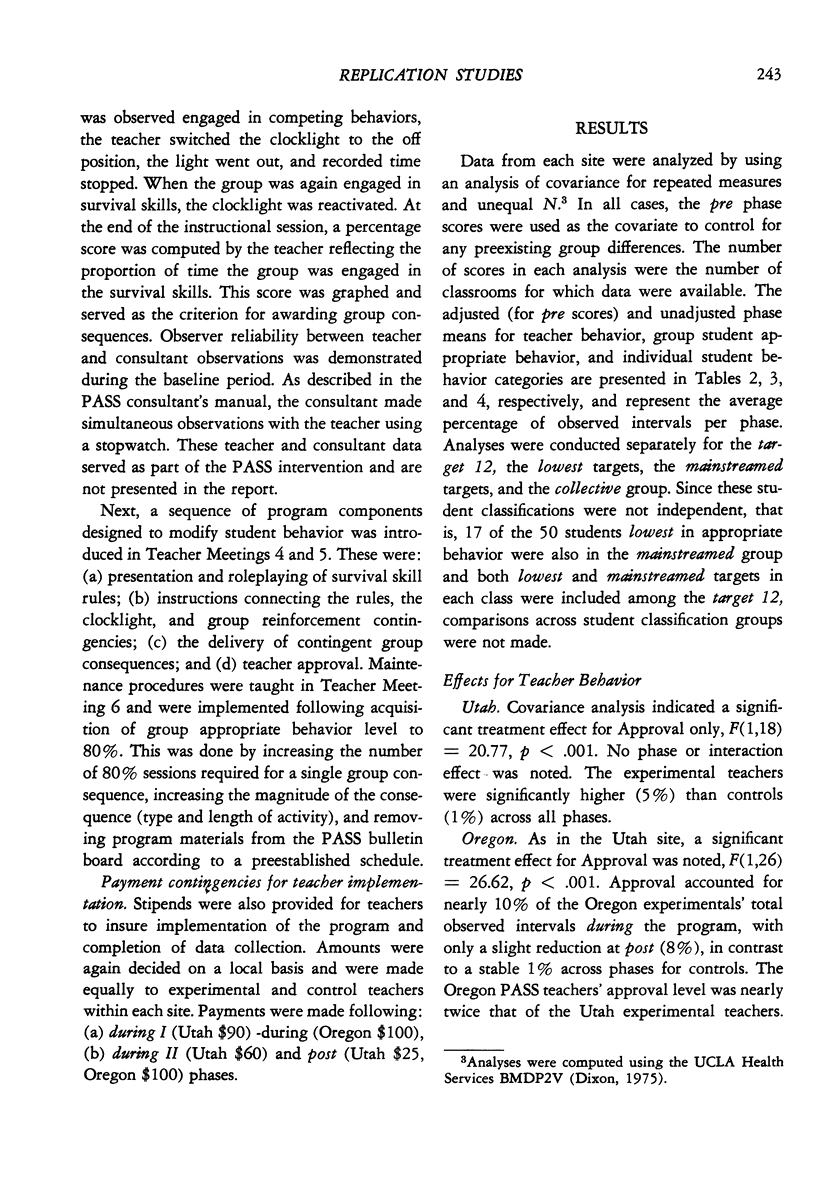
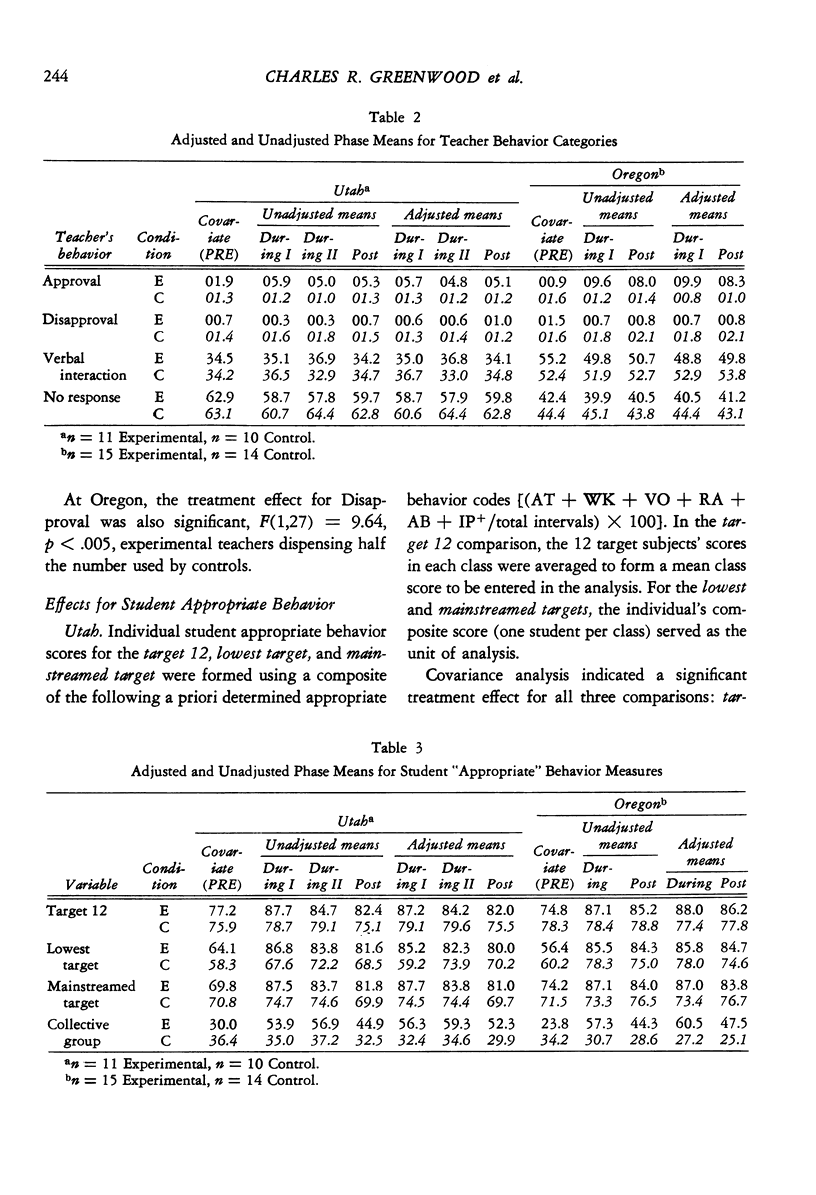
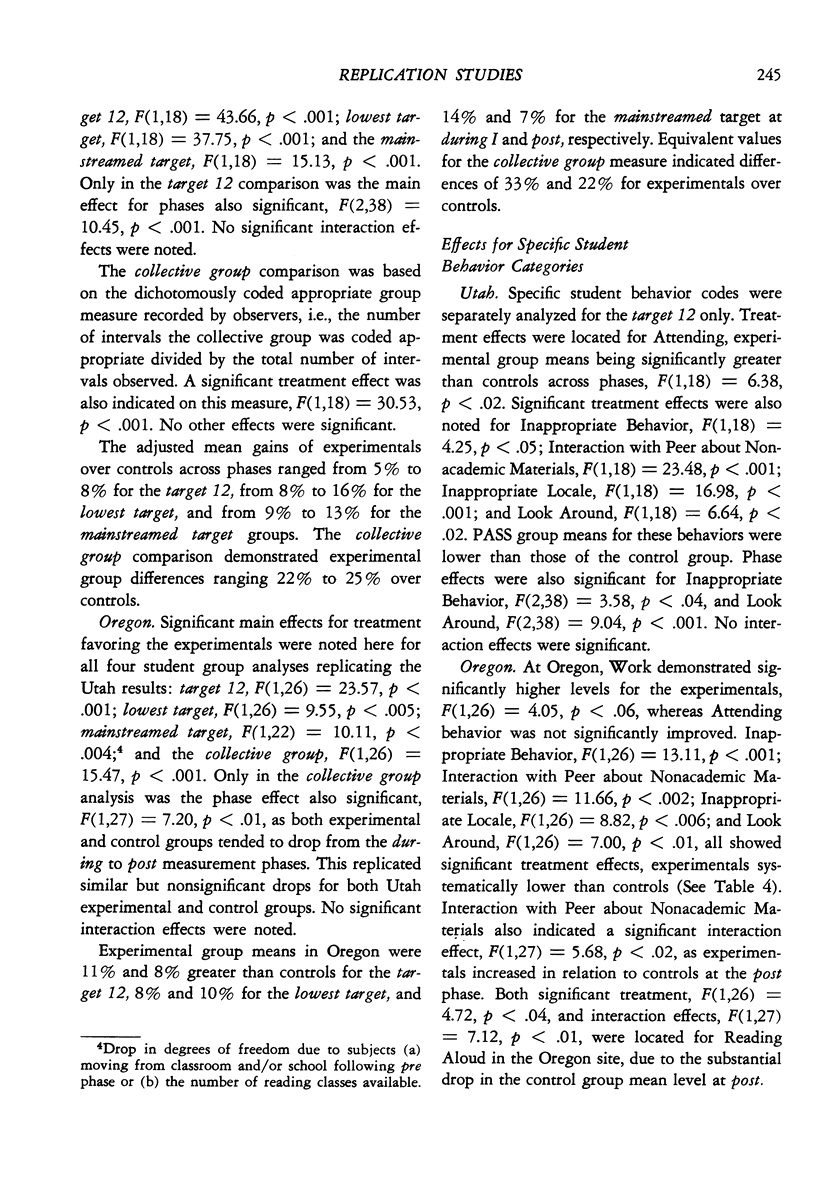
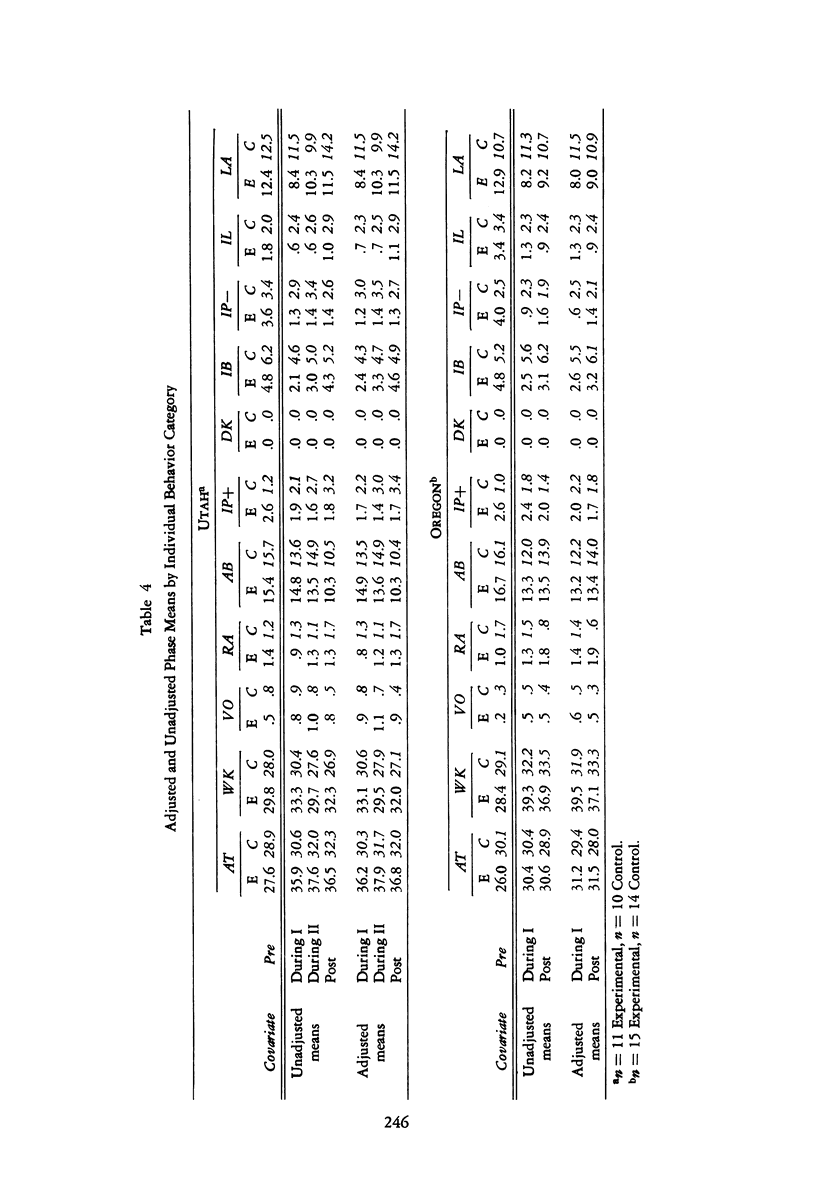
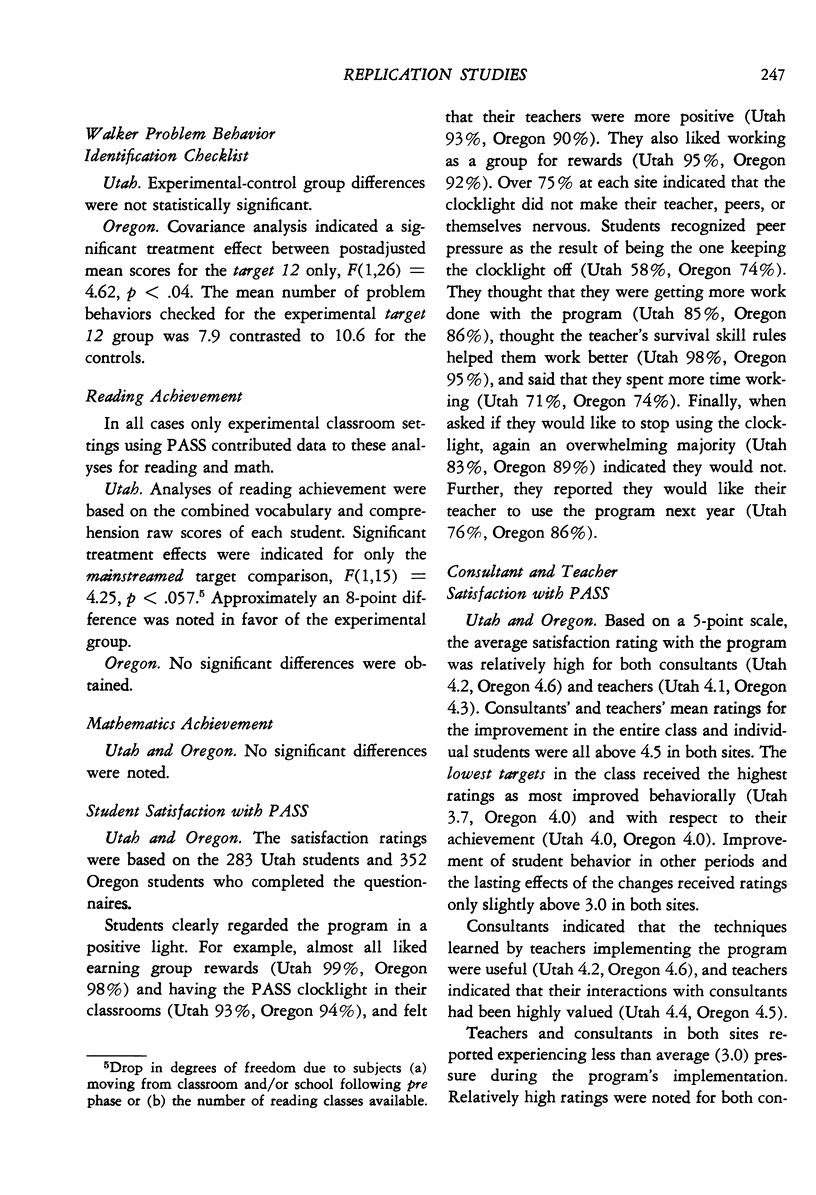
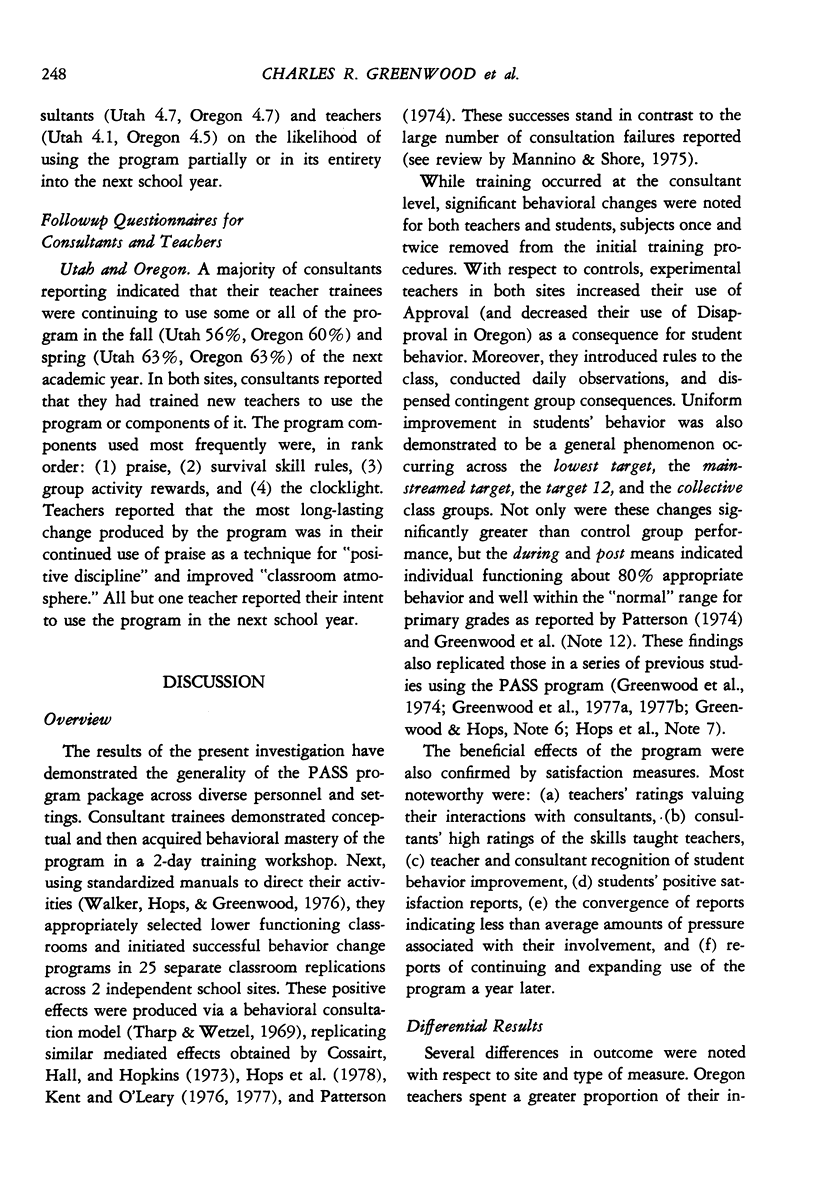
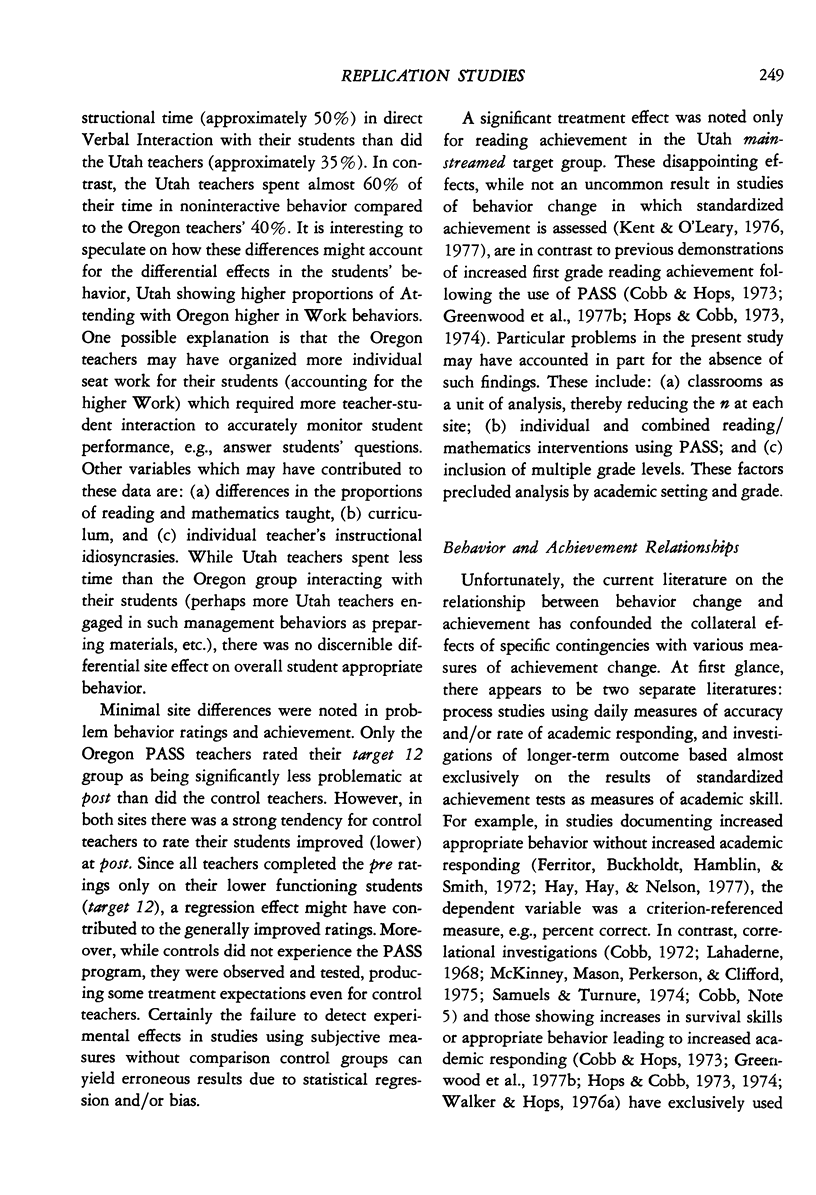
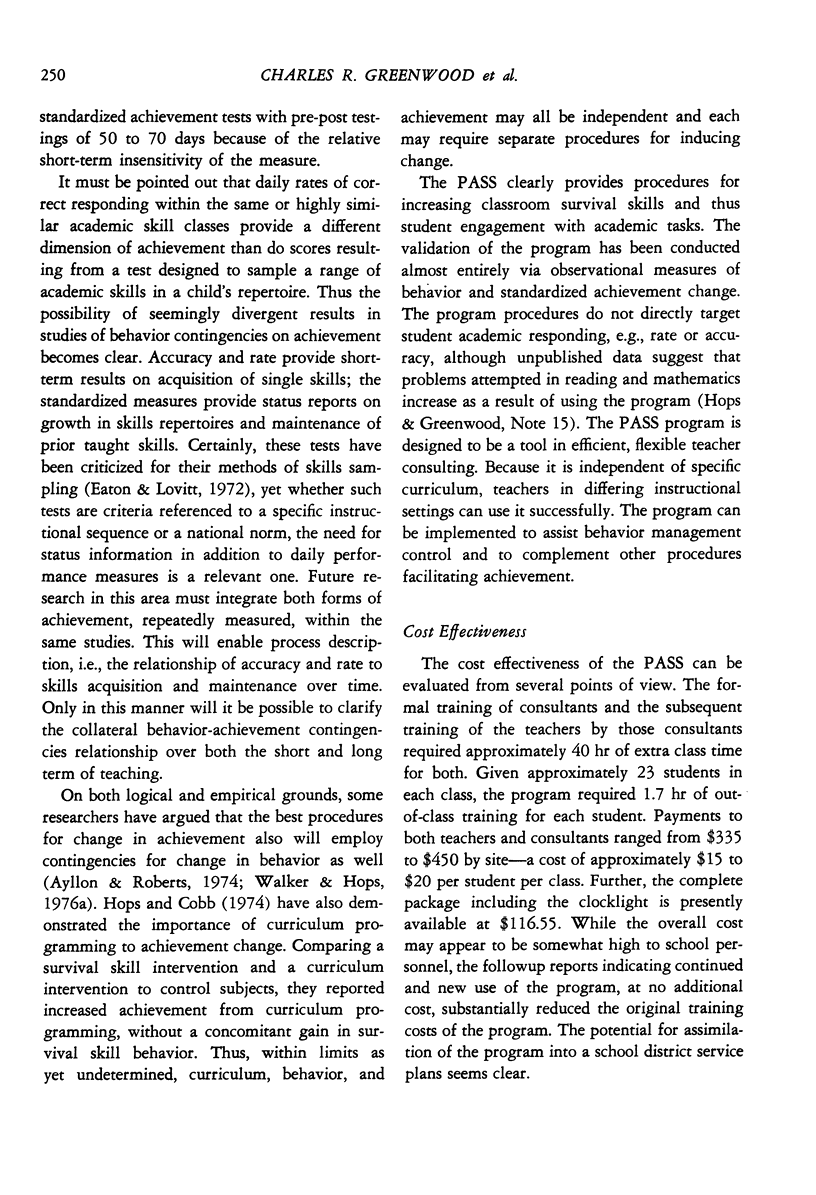
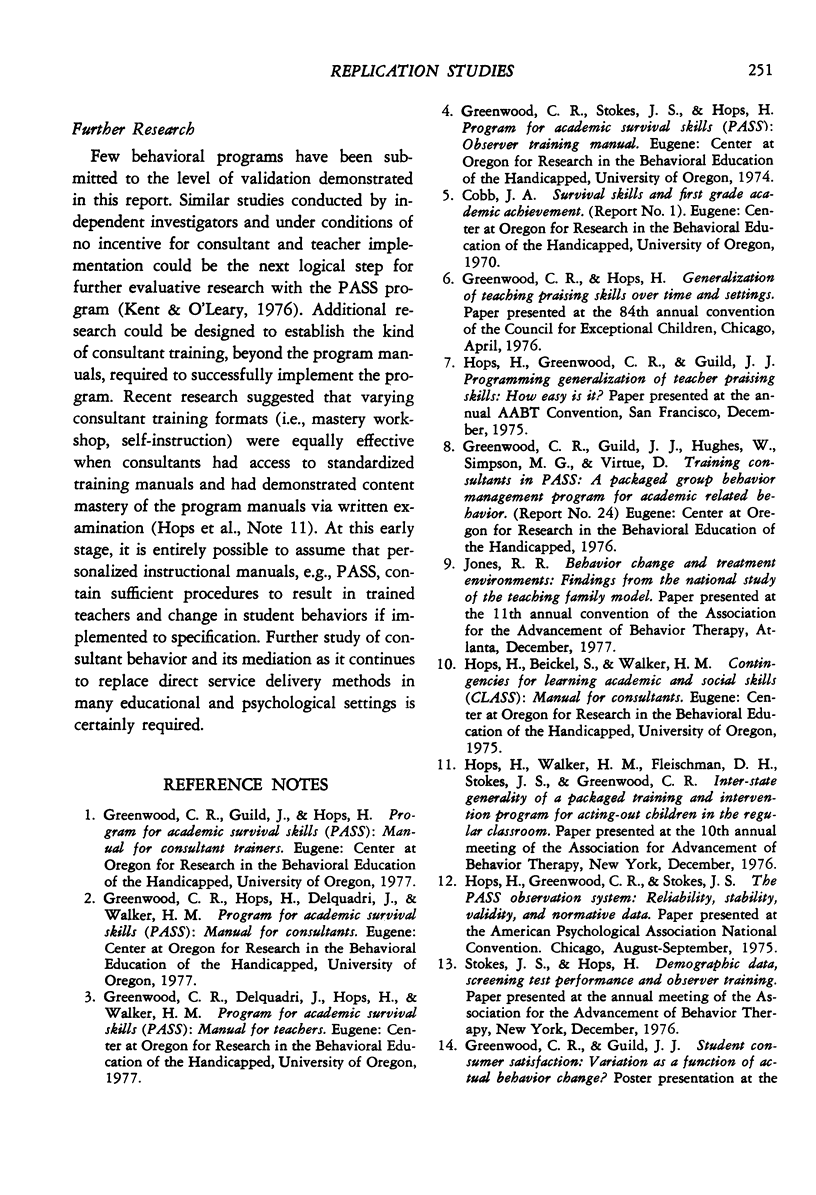
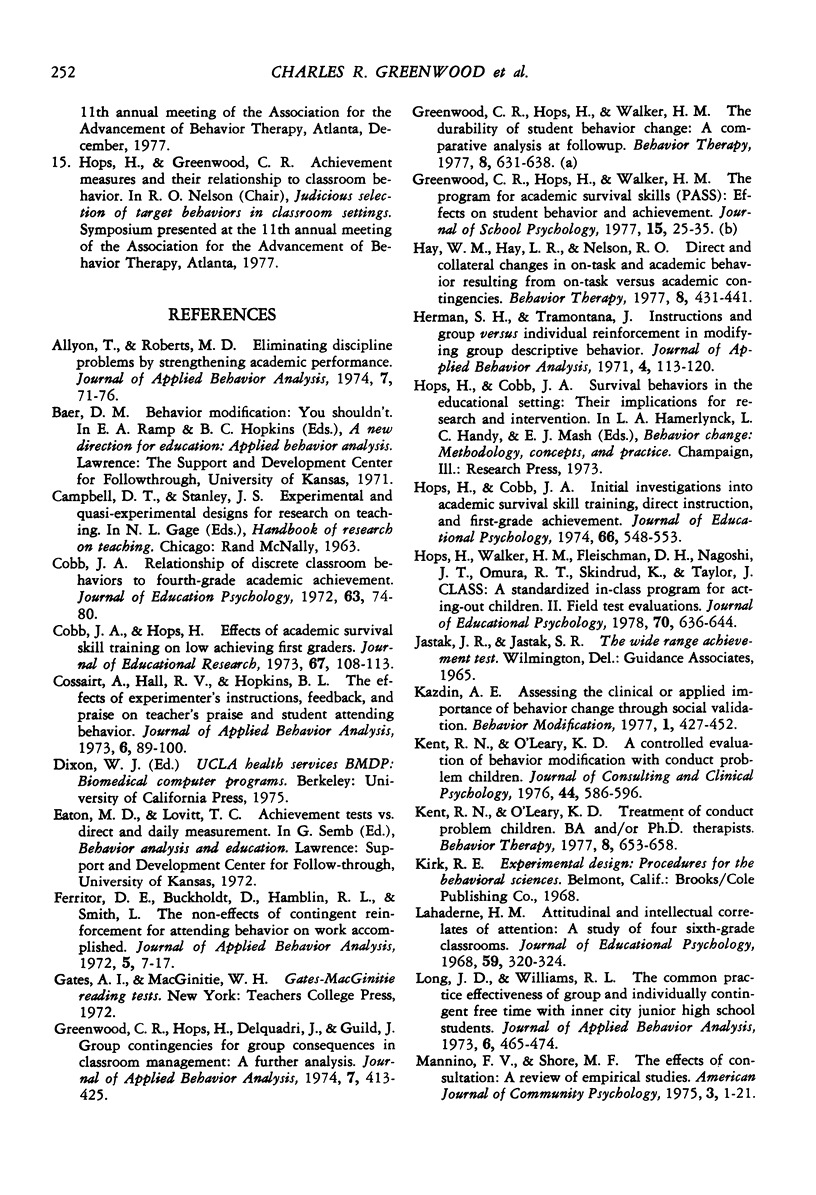
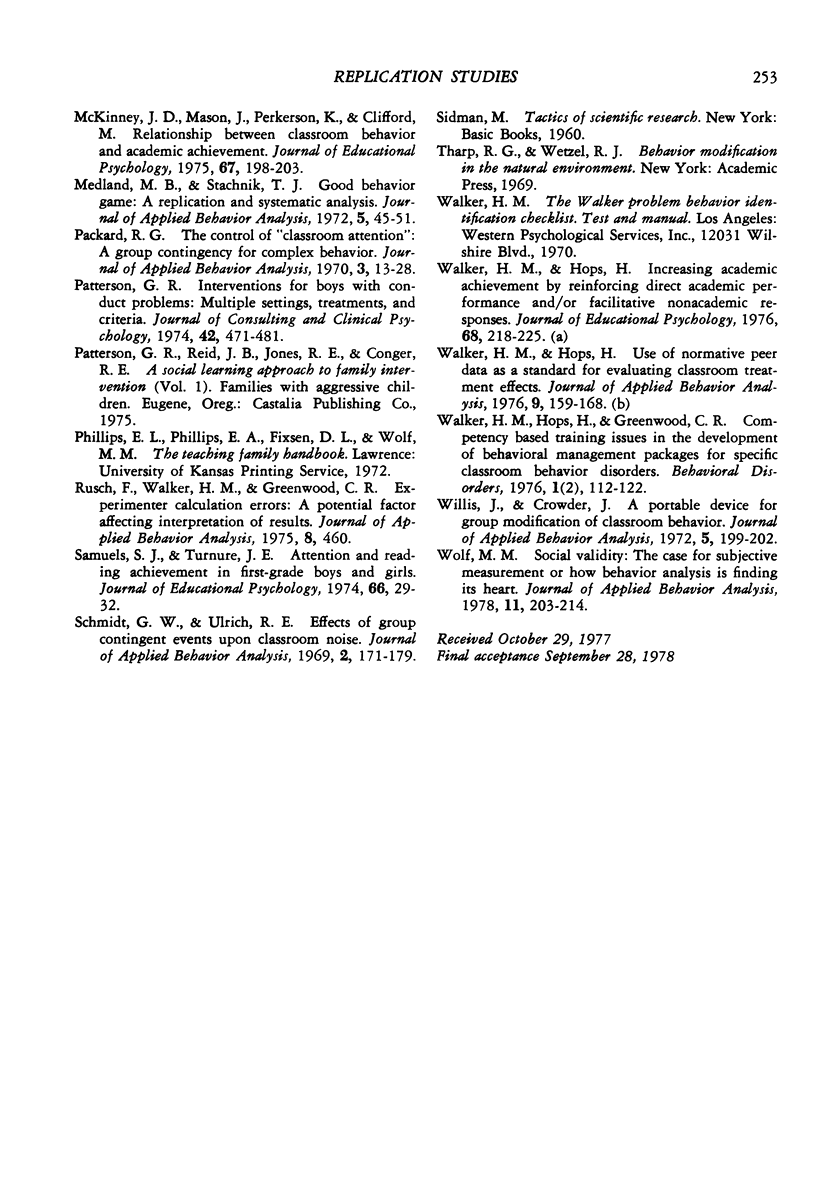
Selected References
These references are in PubMed. This may not be the complete list of references from this article.
- Ayllon T., Roberts M. D. Eliminating discipline problems by strengthening academic performance. J Appl Behav Anal. 1974 Spring;7(1):71–76. doi: 10.1901/jaba.1974.7-71. [DOI] [PMC free article] [PubMed] [Google Scholar]
- Cossairt A., Hall R. V., Hopkins B. L. The effects of experimenter's instructions, feedback, and praise on teacher praise and student attending behavior. J Appl Behav Anal. 1973 Spring;6(1):89–100. doi: 10.1901/jaba.1973.6-89. [DOI] [PMC free article] [PubMed] [Google Scholar]
- Ferritor D. E., Buckholdt D., Hamblin R. L., Smith L. The noneffects of contingent reinforcement for attending behavior on work accomplished. J Appl Behav Anal. 1972 Spring;5(1):7–17. doi: 10.1901/jaba.1972.5-7. [DOI] [PMC free article] [PubMed] [Google Scholar]
- Greenwood C. R., Hops H., Delquadri J., Guild J. Group contingencies for group consequences in classroom management: a further analysis. J Appl Behav Anal. 1974 Fall;7(3):413–425. doi: 10.1901/jaba.1974.7-413. [DOI] [PMC free article] [PubMed] [Google Scholar]
- Herman S. H., Tramontana J. Instructions and group versus individual reinforcement in modifying disruptive group behavior. J Appl Behav Anal. 1971 Summer;4(2):113–119. doi: 10.1901/jaba.1971.4-113. [DOI] [PMC free article] [PubMed] [Google Scholar]
- Hops H., Walker H. M., Fleischman D. H., Nagoshi J. T., Omura R. T., Skindrud K., Taylor J. Class: a standardized in-class program for acting-out children. II. Field test evaluations. J Educ Psychol. 1978 Aug;70(4):636–644. doi: 10.1037/0022-0663.70.4.636. [DOI] [PubMed] [Google Scholar]
- Kent R. N., O'Leary K. D. A controlled evaluation of behavior modification with conduct problem children. J Consult Clin Psychol. 1976 Aug;44(4):586–596. doi: 10.1037//0022-006x.44.4.586. [DOI] [PubMed] [Google Scholar]
- Lahaderne H. M. Attitudinal and intellectual correlates of attention: a study of four sixth-grade classrooms. J Educ Psychol. 1968 Oct;59(5):320–324. doi: 10.1037/h0026223. [DOI] [PubMed] [Google Scholar]
- Long J. D., Williams R. L. The comparative effectiveness of group and individually contingent free time with inner-city junior high school students. J Appl Behav Anal. 1973 Fall;6(3):465–474. doi: 10.1901/jaba.1973.6-465. [DOI] [PMC free article] [PubMed] [Google Scholar]
- Mannino F. V., Shore M. F. The effects of consultation. A review of empirical studies. Am J Community Psychol. 1975 Mar;3(1):1–21. doi: 10.1007/BF01101416. [DOI] [PubMed] [Google Scholar]
- Medland M. B., Stachnik T. J. Good-behavior game: a replication and systematic analysis. J Appl Behav Anal. 1972 Spring;5(1):45–51. doi: 10.1901/jaba.1972.5-45. [DOI] [PMC free article] [PubMed] [Google Scholar]
- doi: 10.1901/jaba.1975.8-460. [DOI] [PMC free article] [Google Scholar]
- Packard R. G. The control of "classroom attention": a group contingency for complex behavior. J Appl Behav Anal. 1970 Spring;3(1):13–28. doi: 10.1901/jaba.1970.3-13. [DOI] [PMC free article] [PubMed] [Google Scholar]
- Patterson G. R. Interventions for boys with conduct problems: multiple settings, treatments, and criteria. J Consult Clin Psychol. 1974 Aug;42(4):471–481. doi: 10.1037/h0036731. [DOI] [PubMed] [Google Scholar]
- Schmidt G. W., Ulrich R. E. Effects of group contingent events upon classroom noise. J Appl Behav Anal. 1969 Fall;2(3):171–179. doi: 10.1901/jaba.1969.2-171. [DOI] [PMC free article] [PubMed] [Google Scholar]
- Walker H. M., Hops H. Use of normative peer data as a standard for evaluating classroom treatment effects. J Appl Behav Anal. 1976 Summer;9(2):159–168. doi: 10.1901/jaba.1976.9-159. [DOI] [PMC free article] [PubMed] [Google Scholar]
- Willis J., Crowder J. A portable device for group modification of classroom attending behavior. J Appl Behav Anal. 1972 Summer;5(2):199–202. doi: 10.1901/jaba.1972.5-199. [DOI] [PMC free article] [PubMed] [Google Scholar]
- Wolf M. M. Social validity: the case for subjective measurement or how applied behavior analysis is finding its heart. J Appl Behav Anal. 1978 Summer;11(2):203–214. doi: 10.1901/jaba.1978.11-203. [DOI] [PMC free article] [PubMed] [Google Scholar]


